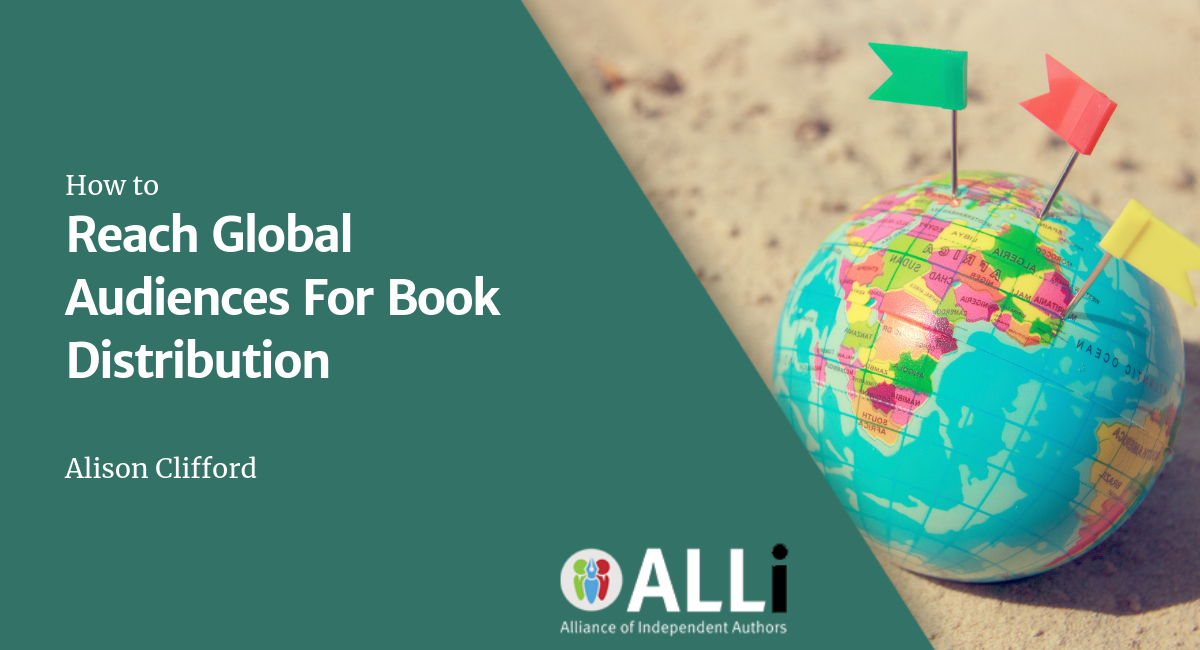Many self-publishing platforms have an extensive world-wide reach. But is that where it ends when authors think of being global? What can we do, as indie authors, to be truly global and embrace our world-wide audience? ALLi author member Alison Clifford discusses how to reach global audiences as authors and whether there's more to it than just distribution.
 The internet has shrunk the world. Connecting with someone on the other side of the planet is as simple as picking up your smartphone or turning on your computer. We engage globally every day just by checking our Facebook page or the latest post on our favourite blog. So why should our interactions with our readers ignore this? Surely it’s in our favour to acknowledge our reach and to embrace it? If we don’t, we risk alienating those who live outside our own region. Global reach for authors means we're expanding into new countries, with many of us translating out books into other languages. If we want to learn how to reach global audiences with our books, then we need to follow that up by thinking globally when it comes to our readers.
The internet has shrunk the world. Connecting with someone on the other side of the planet is as simple as picking up your smartphone or turning on your computer. We engage globally every day just by checking our Facebook page or the latest post on our favourite blog. So why should our interactions with our readers ignore this? Surely it’s in our favour to acknowledge our reach and to embrace it? If we don’t, we risk alienating those who live outside our own region. Global reach for authors means we're expanding into new countries, with many of us translating out books into other languages. If we want to learn how to reach global audiences with our books, then we need to follow that up by thinking globally when it comes to our readers.
Connecting with our readers is important not only for book sales, but for marketing and platform reasons. Imagine getting a blog post from your favourite author containing a summer reading list complete with images of bright sunshine, when you’re in the dark and cold of late autumn. It’s not inspiring, nor does it build a connection between the author and the reader. Sure, you can take it as well meant, but it doesn’t include you or others in your half of the world. Similarly, articles that appear to target only one country, or competitions that are restricted to a specific region, can make others feel left out. Sometimes things need to be location driven, but there are ways to acknowledge or work around it. By keeping everyone in mind you are cultivating good will around your brand.
Building global reach for authors starts with small steps. You can start by looking at your statistics. Where are your newsletter and blog subscribers located? What countries are your social media followers from? Where have you sold books? This information can help you think globally so you can plan your interactions with followers and include them all.
Ideas on How to Reach Global Audiences
The Seasons
As an Aussie, I’ve come across this issue on many occasions and I’ve been known to unsubscribe from newsletters that are repeat offenders. Remember there are two hemispheres and they have different seasons. Do you have a summer reading list you want to send out? Why not create a winter one as well? Most email services not only provide your subscribers locations, but allow you to create a sub-group from your list. You can split your subscriber list into two, according to location (north and south), and send the relevant reading list to the appropriate group.
Sound like too much work? Then send both out in the one newsletter and invite everyone to choose. Do you want to send out a spring newsletter or use spring as an introductory topic? Go ahead, but instead of “welcome to spring” trying saying “If you’re like me and enjoying the start of spring” followed at some point by “for those heading into autumn/fall, enjoy those cosy nights inside with a good book”. It doesn’t take much to include everyone and by doing so you’ll maintain goodwill with your followers.
Word Choice
Do you refer to people outside your country as being international? Newsflash—we’re all international to someone! Referring to others as international can create the impression you think the world revolves around your country. Using a phrase such as “those outside Australia” or “those living overseas” acknowledges everyone without making it quite so direct. You’re recognising them without making them feel like outsiders. This may sound like nit-picking, but it’s a simple thing to do, so why not?
Competitions
Competitions are a little more difficult. Do you want to post three books to the other side of the world? Is that voucher usable overseas? This is another time where you could split your email list, or if the competition is on social media, make sure there are prize options. Perhaps you could use the print books for your immediate region and offer ebooks or a voucher (make sure it can be used anywhere) for those in other areas. Willing to pay the postage? Your overseas followers will love you for it!
When it’s Too Hard
What happens when we can’t be global, when we have to limit a blog post topic, news item, or any other thing to your local region? Be open about it. Explain what the issue is and the local views or implications. While you may be referring to your own region, by taking the time to explain how it relates to your area, you are including others and inviting them into your part of the world. A few sentences for those who may not understand the nuances of a topic as it relates to you will not only include them, but foster a deeper understanding of the world and the differences between us all.
Finally, global reach for authors doesn't mean putting aside your nationality. Think about your readers and followers when you post on social media or send out a newsletter. Acknowledge that what we do as indie authors reaches across the world and invite them in to share yours. We all want to connect, so let’s do it on a global scale!
OVER TO YOU
What nifty tricks do you use to make sure all your readers are included?
If we want to reach global audiences with our books, then we should ensure we follow that up by thinking globally when it comes to our readers #indieauthor #selfpublishing #IARTG #ASMRG #writingcommunity Share on X
If you enjoyed this post you might like these from the archive:





Thanks for the great article! I am about to release my memoir, Radical Shifts as an ebook and paperback on IngramSpark. Cheers!